Songyan Xue
A Non-Stationary Channel Model with Correlated NLoS/LoS States for ELAA-mMIMO
Aug 18, 2021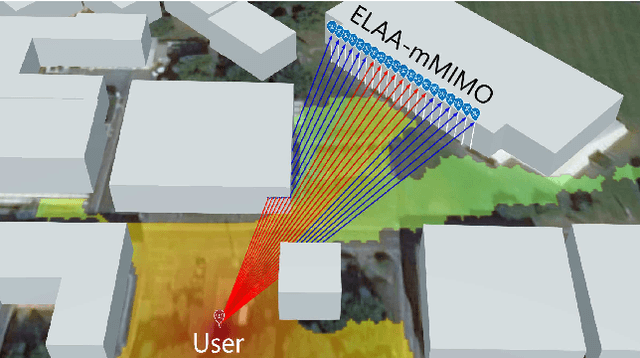
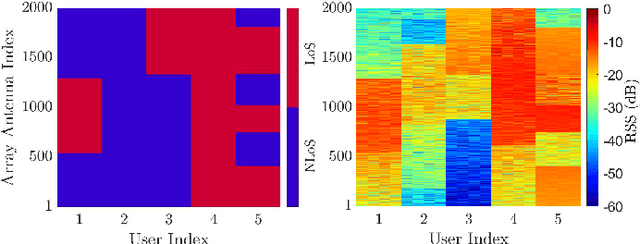
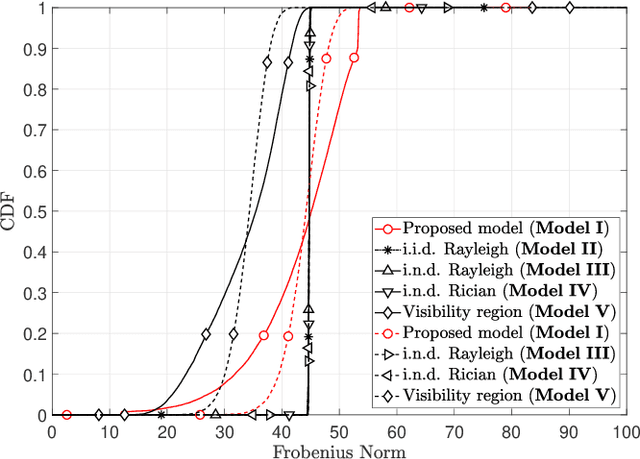
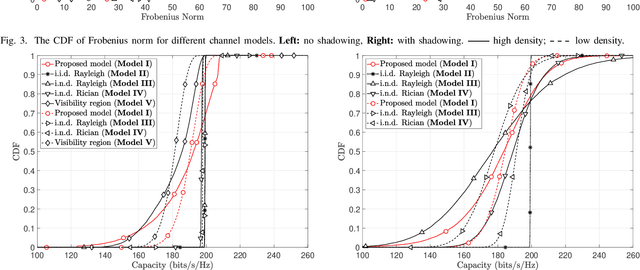
Abstract:In this paper, a novel spatially non-stationary channel model is proposed for link-level computer simulations of massive multiple-input multiple-output (mMIMO) with extremely large aperture array (ELAA). The proposed channel model allows a mix of non-line-of-sight (NLoS) and LoS links between a user and service antennas. The NLoS/LoS state of each link is characterized by a binary random variable, which obeys a correlated Bernoulli distribution. The correlation is described in the form of an exponentially decaying window. In addition, the proposed model incorporates shadowing effects which are non-identical for NLoS and LoS states. It is demonstrated, through computer emulation, that the proposed model can capture almost all spatially non-stationary fading behaviors of the ELAA-mMIMO channel. Moreover, it has a low implementational complexity. With the proposed channel model, Monte-Carlo simulations are carried out to evaluate the channel capacity of ELAA-mMIMO. It is shown that the ELAA-mMIMO channel capacity has considerably different stochastic characteristics from the conventional mMIMO due to the presence of channel spatial non-stationarity.
End-to-End Learning for Uplink MU-SIMO Joint Transmitter and Non-Coherent Receiver Design in Fading Channels
May 04, 2021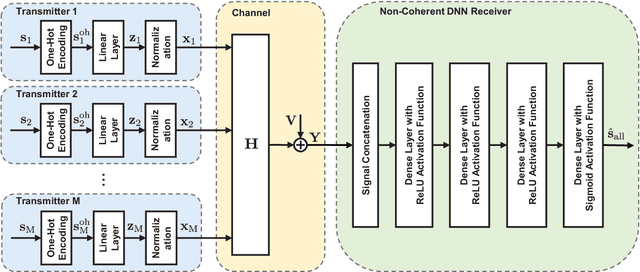
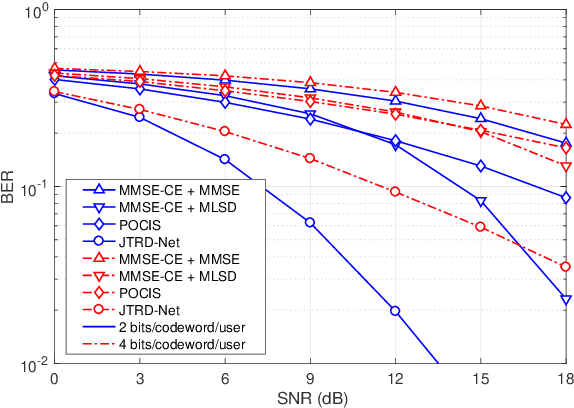
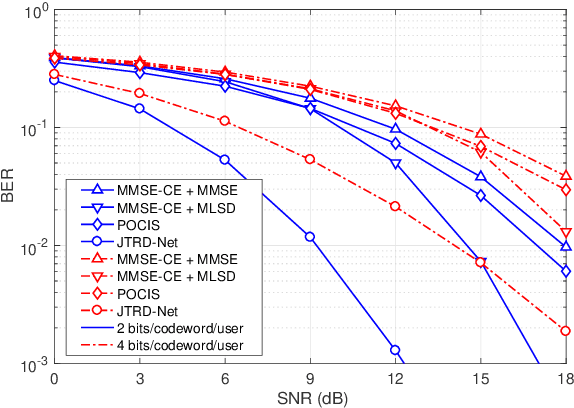
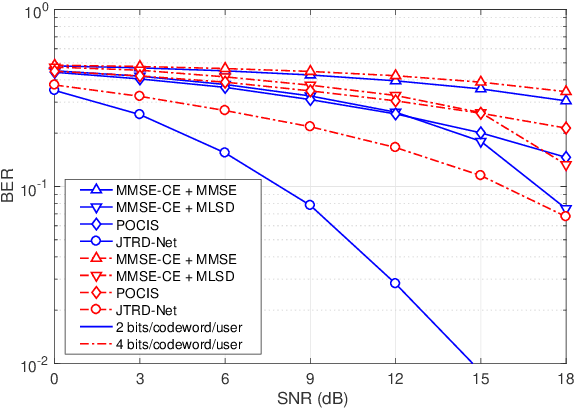
Abstract:In this paper, a novel end-to-end learning approach, namely JTRD-Net, is proposed for uplink multiuser single-input multiple-output (MU-SIMO) joint transmitter and non-coherent receiver design (JTRD) in fading channels. The basic idea lies in the use of artificial neural networks (ANNs) to replace traditional communication modules at both transmitter and receiver sides. More specifically, the transmitter side is modeled as a group of parallel linear layers, which are responsible for multiuser waveform design; and the non-coherent receiver is formed by a deep feed-forward neural network (DFNN) so as to provide multiuser detection (MUD) capabilities. The entire JTRD-Net can be trained from end to end to adapt to channel statistics through deep learning. After training, JTRD-Net can work efficiently in a non-coherent manner without requiring any levels of channel state information (CSI). In addition to the network architecture, a novel weight-initialization method, namely symmetrical-interval initialization, is proposed for JTRD-Net. It is shown that the symmetrical-interval initialization outperforms the conventional method (e.g. Xavier initialization) in terms of well-balanced convergence-rate among users. Simulation results show that the proposed JTRD-Net approach takes significant advantages in terms of reliability and scalability over baseline schemes on both i.i.d. complex Gaussian channels and spatially-correlated channels.
On Deep Learning Solutions for Joint Transmitter and Noncoherent Receiver Design in MU-MIMO Systems
Apr 14, 2020
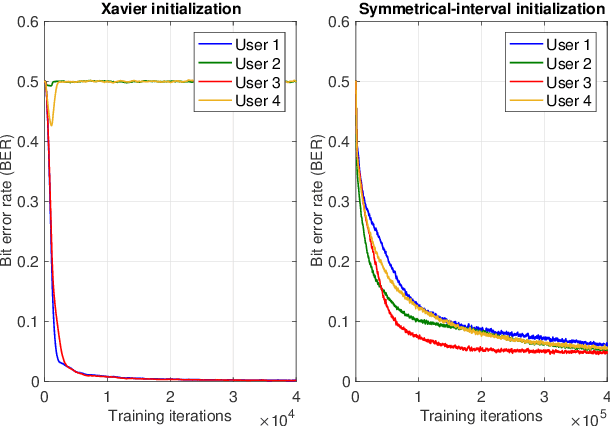
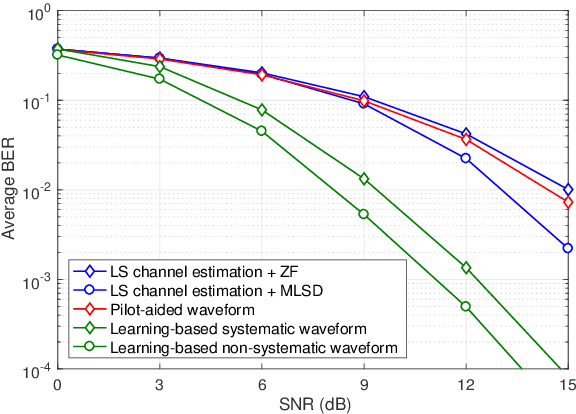

Abstract:This paper aims to handle the joint transmitter and noncoherent receiver design for multiuser multiple-input multiple-output (MU-MIMO) systems through deep learning. Given the deep neural network (DNN) based noncoherent receiver, the novelty of this work mainly lies in the multiuser waveform design at the transmitter side. According to the signal format, the proposed deep learning solutions can be divided into two groups. One group is called pilot-aided waveform, where the information-bearing symbols are time-multiplexed with the pilot symbols. The other is called learning-based waveform, where the multiuser waveform is partially or even completely designed by deep learning algorithms. Specifically, if the information-bearing symbols are directly embedded in the waveform, it is called systematic waveform. Otherwise, it is called non-systematic waveform, where no artificial design is involved. Simulation results show that the pilot-aided waveform design outperforms the conventional zero forcing receiver with least squares (LS) channel estimation on small-size MU-MIMO systems. By exploiting the time-domain degrees of freedom (DoF), the learning-based waveform design further improves the detection performance by at least 5 dB at high signal-to-noise ratio (SNR) range. Moreover, it is found that the traditional weight initialization method might cause a training imbalance among different users in the learning-based waveform design. To tackle this issue, a novel weight initialization method is proposed which provides a balanced convergence performance with no complexity penalty.
A Modular Neural Network Based Deep Learning Approach for MIMO Signal Detection
Apr 01, 2020
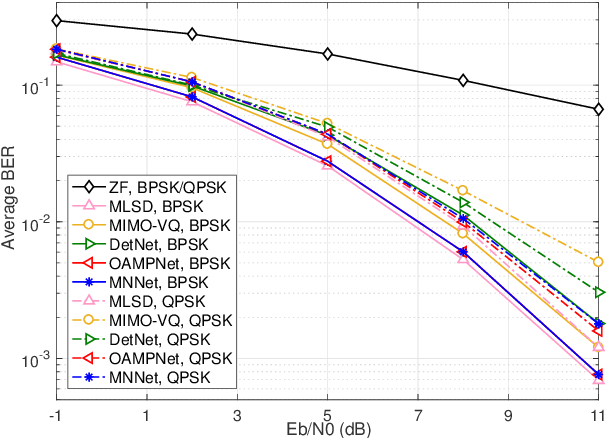


Abstract:In this paper, we reveal that artificial neural network (ANN) assisted multiple-input multiple-output (MIMO) signal detection can be modeled as ANN-assisted lossy vector quantization (VQ), named MIMO-VQ, which is basically a joint statistical channel quantization and signal quantization procedure. It is found that the quantization loss increases linearly with the number of transmit antennas, and thus MIMO-VQ scales poorly with the size of MIMO. Motivated by this finding, we propose a novel modular neural network based approach, termed MNNet, where the whole network is formed by a set of pre-defined ANN modules. The key of ANN module design lies in the integration of parallel interference cancellation in the MNNet, which linearly reduces the interference (or equivalently the number of transmit-antennas) along the feed-forward propagation; and so as the quantization loss. Our simulation results show that the MNNet approach largely improves the deep-learning capacity with near-optimal performance in various cases. Provided that MNNet is well modularized, the learning procedure does not need to be applied on the entire network as a whole, but rather at the modular level. Due to this reason, MNNet has the advantage of much lower learning complexity than other deep-learning based MIMO detection approaches.
 Add to Chrome
Add to Chrome Add to Firefox
Add to Firefox Add to Edge
Add to Edge